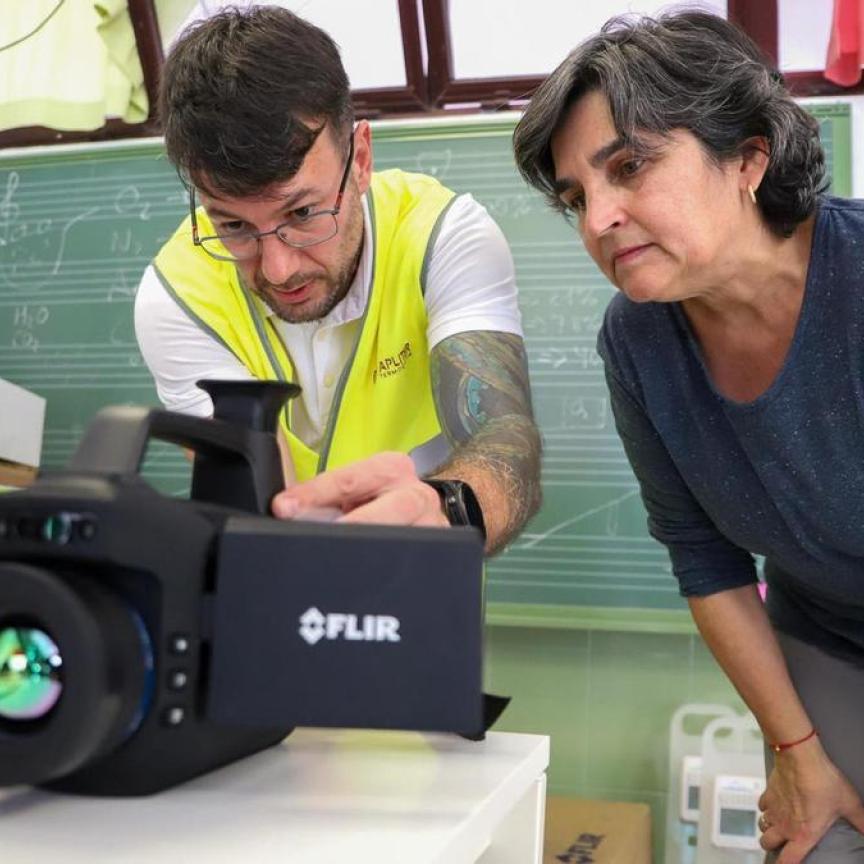New photodiodes have been developed capable of detecting near-infrared light with a photoelectron yield (quantum efficiency) of more than 200%.
The technology, described in Science Advances, shows promise for use in flexible devices across applications in medicine, optical communications, machine vision, and surveillance.
Four years ago, Riccardo Ollearo, a PhD student at the Eindhoven University of Technology (TU/e), built a device known as a “tandem diode”, which combined both perovskite and organic photovoltaic cells. Combining these two layers – a technique increasingly used in state-of-the-art solar cells – enabled Ollearo to achieve a photoelectron yield of 70 per cent for his tandem diode.
From earlier research, Ollearo knew that illuminating solar cells with additional light can improve their quantum efficiency. He therefore decided to illuminate his tandem diode using green light.
“To my surprise, this worked even better than expected in improving the photodiode sensitivity – we were able to increase the efficiency for near-infrared light to over 200%!” he said.
While Ollearo and his colleagues don’t yet know exactly why the sensitivity has improved so much, they have theorised as to why this might be the case.
“We think that the additional green light leads to a build-up of electrons in the perovskite layer,” Ollearo explained. “This acts as a reservoir of charges that is released when infrared photons are absorbed in the organic layer. In other words, every infrared photon that gets through and is converted into an electron, gets company from a bonus electron, leading to an efficiency of 200% or more.”
The researchers lab-tested the photodiode, which measures one hundred times thinner than a sheet of newsprint – making it applicable in flexible devices. “We wanted to see whether the device could pick up subtle signals, such as the heart or respiration rate of a human being in an environment with realistic background light,” said Ollearo. “We opted for an indoor scenario, during a sunny day with the curtains partially closed. And it worked!”
Holding the device 130cm away from a finger, the researchers were able to detect minute changes in the amount of infrared light that was reflected back into the diode. These were indications of changes in blood pressure in the person’s veins, which in turn indicated heart rate. When pointing the device at the person’s chest, the researchers were able to measure the respiration rate from light movements in the thorax.
The researchers are now looking to improve the device further, for example by making it quicker. “We also want to explore whether we can clinically test the device, for instance in collaboration with the FORSEE project,” said Ollearo. This project, led by TU/e researcher Sveta Zinger and in collaboration with the Catharina Hospital in Eindhoven, is developing an intelligent camera that can observe a patient’s heart and respiration rates.
The Science Advances paper can be found here.


